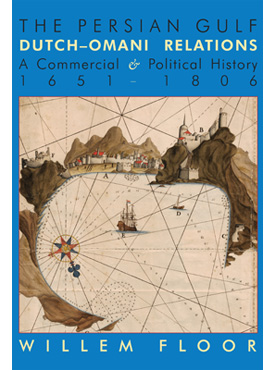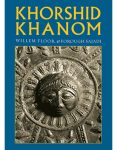About the Book
Dutch relations with Oman from 1651 to 1806 were substantial and the written accounts provide the most detailed picture of the political and socio-economic situation in that country during this period. The information on Muscat in the 1670s and 1750s is unique and revealing, while the trek of the Dutch shipwreck survivors in 1763 gives us a glimpse, for the first time, into the life and conditions of the people of Oman’s interior regions. All this information is brought to life in this book, which will be rewarding both to scholars and to those readers interested in the history, economics, and development of Oman and the people of the Persian Gulf.
Willem Floor’s previous books in his Persian Gulf series include: A Political and Economic History of 5 Port Cities, 1500-1730; The Rise of the Gulf Arabs, 1747–1792; The Rise and Fall of Bandar-e Lengeh; Bandar Abbas: The Natural Gateway of Southeast Iran; Links with the Hinterland: Bushehr, Borazjan, Kazerun, Banu Ka’b, & Bandar Abbas; and The Hula Arabs of the Shibkuh Coast of Iran.
About the Author
Willem Floor studied development economics and non-western sociology, as well as Persian, Arabic and Islamology from 1963-67 at the University of Utrecht (the Netherlands). He received his doctoral degree from the University of Leiden in 1971. Since 1983, Dr. Floor was employed by the World Bank as an energy specialist, however, after his retirement in 2002, he has dedicated his time to the study of the social and political history of Iran, and has published extensively throughout this time. His books include: Public Health in Qajar Iran, Agriculture in Qajar Iran, and The History of Theater in Iran, as well as, The Persian Gulf: A Political and Economic History of 5 Port Cities, 1500-1730, its second volume, Persian Gulf: The Rise of the Gulf Arabs, 1747-1792, third volume, The Rise and Fall of Bandar-e Lengeh, the fourth volume, Bandar Abbas: The Natural Gateway of Southeast Iran, and the fifth volume, The Persian Gulf: Links with the Hinterland Bushehr, Borazjan, Kazerun, Banu Ka’b, & Bandar Abbas, The Persian Gulf: The Hula Arabs of The Shibkuh Coast of Iran, and The Persian Gulf: Dutch-Omani Relations A Commercial & Political History 1651-1806, and The Persian Gulf: Muscat – City, Society and Trade . He has also published, Travels Through Northern Persia, 1770-1774, Titles and Emoluments in Safavid Iran, and A Social History of Sexual Relations in Iran; Labor and Industry in Iran, 1850-1941; Guilds, Merchants and Ulama in 19th Century Iran; The Rise and Fall of Nader Shah; Games Persians Play, and History of Bread in Iran. His translations include: Samuel Gottlieb Gmelin’s Travels Through Northern Persia 1770–1774 , and with Hasan Javadi, Abbas Qoli Aqa Bakikhanov’s The Heavenly Rose-Garden: A History of Shirvan & Daghestan; Evliya Chelebi’s Travels in Iran and the Caucasus, 1647 and 1654; A Man of Two Worlds: Pedros Bedik in Iran, 1670–1675, and Awake: A Moslem Woman’s Rare Memoir of Her Life and Partnership with the Editor of Molla Nasreddin, the Most Influential Satirical Journal of the Caucasus and Iran, 1907–1931
Willem Floor was invited to Tehran in February, 2017 and presented with the Farabi International Prize for Humanitarian Studies.








